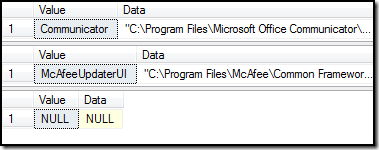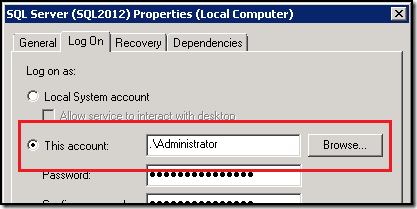Microsoft SQL Server: Server-related dynamic management views in SQL Server 2008 SP1 , “2012" and Above
There are three new server-related DMVs introduced in SQL Server 2008 R2 Service Pack 1 and SQL Server "2012".
1. sys.dm_server_services:
- For SQL Server 2008 R2 SP1, it contains information about SQL Server and SQL Server Agent services for the current instance.
- For "Denali", it returns information about SQL Server, Full-Text Search and SQL Server Agent services for the current instance. Let’s use below query on both:
SELECT servicename AS [Name],
startup_type_desc AS [Type],
status_desc AS [Status],
process_id AS [ProcessID],
service_account AS [Startup Account]
FROM sys.dm_server_services
Result Set for SQL Server 2008 R2 SP1:
Name Type Status ProcessID Startup Account
————————– ——- —— ——— —————
SQL Server (MSSQLSERVER) Automatic Running 2492 .\sqladmin
SQL Server Agent (MSSQLSERVER) Manual Stopped NULL .\sqladmin
(2 row(s) affected)
Result Set for "Denali":
Name Type Status ProcessID Startup Account
————————– —— —— ——— —————
SQL Server (DENALI) Manual Running 5176 .\sqladmin
SQL Server Agent (DENALI) Manual Stopped NULL .\sqladmin
SQL Server Agent (DENALI) Manual Stopped NULL .\sqladmin
(3 row(s) affected)
Ah!, for "Denali" it’s returning two entries for SQL Server Agent, and not returning the Full-Text Search service, (it is installed), a possible "Denali" bug (Anyone else got the same issue?).
2. sys.dm_server_registry:
- For both SQL Server 2008 R2 SP1 and "Denali" – this view returns configuration and installation information, such as host machine or network configuration for the current instance, i.e. information we used to fetch using xp_instance_regred for an instance, Let’s execute below query on both:
SELECT registry_key, value_name, value_data
FROM sys.dm_server_registry
WHERE value_name = N'CurrentVersion'
Result Set for SQL Server 2008 R2 SP1:
registry_key value_name value_data
——————————- ———– ————
HKLM\Software\…\MSSQLServer\CurrentVersion CurrentVersion 10.50.2500.0
(1 row(s) affected)
Result Set for "2012":
registry_key value_name value_data
——————————- ———– ————
HKLM\Software\…\MSSQLServer\CurrentVersion CurrentVersion 11.0.1440.19
(1 row(s) affected)
3. sys.dm_server_memory_dumps:
This view returns a list of memory dump files generated by the SQL Server Database Engine. It returns below information:
i) filename – File name and physical path of the memory dump file,
ii) creation_time – date and time the memory dump file creation,
iii) size_in_bytes – memory dump file size in bytes.

